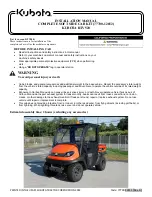
Synergy Technician's Software Reference Page 9
provide software adjustment to Projector
Alignment (make sure load zone is aligned
with belt).
○
Length -I
: Length of Projection as defined
by the Calibration Mode.
○
Width -I
: Width of Projection as defined
by the Calibration Mode.
○
X Increment/Decrement -I
: Moves Load
Zones red box along the Width of the
Projection. Can move Load Zone out of
projection entirely.
○
Y Increment/Decrement -I
: Moves Load
Zones red box along the Length of the
Projection. Can move Load Zone out of
projection entirely.
○
Load Orientation
: Determines where the
Top of the load zone is displayed, and the
orientation of scanned garments in Queue
Mode.
■
Collar Up
: Collar is at the top
towards the Spray Chamber, oppo-
site of the Operator.
■
Collar Right
: Collar is at the right
towards the side of the belt, right
of the operator.
○
LoadZone -I
: Settings indicating for the
system where the Load Zone is on the belt.
■
Start -I
: Where the zone is located
starting from the inside of the Belt
Guard by the Operator.
■
Width -I
: The width of the zone
on the belt. This affects the solid
red lines placement, Start will need
to be adjusted or the Load Zone
moved.
○ SendFireflyData -I
: Settings indicating for
the system when the system should pass
garment settings on to the firefly.
■
Start -I
: Where the zone is located
starting from the inside of the Belt
Guard by the Operator.
■
Width -I
: The width of the zone
on the belt.
○
NozzleX -I
: Settings indicating for the sys
-
tem where that Nozzle Sprays on the belt.
■
Start -I
: Where the zone is located
starting from the inside of the Belt
Guard by the Operator.
■
Width -I
: The width of the zone
on the belt. This value is used
in spray density calculations and
should be accurate with the actual
spray location on the belt.
●
Page 7
: Carriage and Spray Head Settings
○
Motor ID -F
: ID of the motor used to
move the carriage.
○
Acceleration -F
: Acceleration the carriage
motor uses.
○
Control Method -F
: Determines what
form of feedback and control is used to
trigger turning valves on and off.
■
Position
: The motors position
feedback is used to trigger. May
experience lag due to communica-
tions delay.
■
Time
: Pre-Calculated Time is used
to trigger based on the known
carriage values.
■
Trigger
: An interrupt feedback
from the motor is used to trigger.
Proven to be the most reliable.
Required Advanced Motors.
■
All
: All of the above is used to
trigger. The first one to occur is
the one that actually triggers.
○
Initial Move Buffer
: Determines how
close to the initial spray position (minus
Spray Buffer
) the carriage moves to be-
fore doing a spray.
○
Spray Buffer
: Determines how much the
carriage overtravels during a spray.
○
Early Enable Buffer
: Determines how
early the carriage enables during a spray.
Value must be less than Spray Buffer.
○
Mirror Spray Zones -F
: Informs the sys
-
tem if the Spray Chamber is reversed from
its normal configuration (normally the door
is on the right of the operator, mirrored
would be on the left).
○
Overtravel Board -F
: The type of board
that the overtravel sensors are connected
to.
○
Forward Sensor Board -F
: The address of
the board the Forward Overtravel Sensor is
connected to (sensor farthest from door).
○
Reverse Sensor Board -F
: The address of
the board the Reverse Overtravel Sensor is
connected to (sensor nearest door).
○
Head
: Which spray head is reflected in the
settings.
○
Flush Pump -F
: Pump used to flush the
head.
○
Spray Valve -F
: Nozzle that must be
opened for head to spray out of nozzles.
(Can be Null and still operate)
○
Flush Valve -F
: Nozzle that must be
opened for head to flush nozzles. (Can be
Null and still operate)
○
Line 1 Source Pump -F
: Pump used to
spray Line 1 mixed fluid out of nozzles.
○
Line 2 Source Pump -F
: Pump used to
spray Line 2 mixed fluid out of nozzles.





































